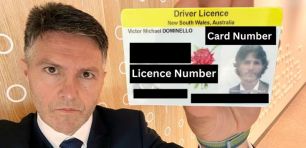
An artificially-generated depiction of an AI accountant.
The Australian Taxation Office is using artificial intelligence (AI) models that can detect superannuation underpayments 90% of the time, according to ATO deputy commissioner Marek Rucinski.
Addressing the the Australian Financial Review Government Services Summit last week, Rucinski outlined the capabilities of the ATO AI models and its Smarter Data unit.
By applying advanced AI techniques to the troves of data collected by the tax office, it is now possible for the tax office preemptively detect which businesses are most likely to underpay staff entitlements, he said.
Since kicking in during the 2018 financial year, the AI models have detected unpaid superannuation with 90% accuracy, and those detections have helped the ATO recover $295 million in unpaid liabilities, Rucinski added.
More broadly, the Australian Financial Review reports the ATO also turned its AI models on the Panama Papers to uncover $242 million owed to the tax office.
Speaking to SmartCompany, an Australian Taxation Office spokesperson said the organisation is deeply invested in “stratified sampling” to identify employers most at risk of superannuation guarantee underpayments.
The system benefits businesses doing the right thing, they added.
“By targeting the highest risk employers, we are able to more efficiently use resources to ensure employers are paying the correct amount of superannuation for their employees,” they said.
“The accuracy of our models also means we are far less likely to contact or undertake reviews of employers doing the right thing, saving those businesses time and resources.”
With the Robodebt saga and its fallout still a pressing issue for the public sector, the spokesperson reiterated that human staff members are “always the decision makers” when assessing outstanding liabilities.
It also trains its AI tools in accordance with data ethics principles, including directives to not unfairly discriminate against small businesses, they added.
“They look at all your assets”
With those revelations, it is clear the ATO is flexing its technical muscle as it attempts to claw back billions in liabilities.
The ATO’s Smarter Data team and advanced data-matching tools are not trained on superannuation underpayments or offshore tax avoidance schemes alone.
In June, Joanne Casburn, a former ATO assistant commissioner and special counsel at Holding Redlich, told SmartCompany the ATO’s tools can crosscheck the data businesses report to the tax office against industry benchmarks to ensure they are staying compliant.
“They have benchmarks now, so if they start investigating a business, they have a benchmark of what they expect from all the data they collect from a particular industry,” she explained.
Using a hairdressing business as an example, Casburn said the ATO “can see what the range is for normal income versus expenses”.
“They check that with the business, and if it’s substantially different, they’ll start asking the business, ‘Well, do you get any cash receipts?'”
The ATO also keeps a keen eye on the assets owned by those who operate businesses.
“They look at all your assets, and look at what your expenses are. And then they look at your income and say, ‘Well, how do you afford that lifestyle?’
“And you’re expected to respond to that. And if you don’t have the data, they can just use the benchmark data and substitute it if the business doesn’t have the records.”
Handpicked for you

Eight things businesses and customers need to know about digital ID in Australia



COMMENTS
SmartCompany is committed to hosting lively discussions. Help us keep the conversation useful, interesting and welcoming. We aim to publish comments quickly in the interest of promoting robust conversation, but we’re a small team and we deploy filters to protect against legal risk. Occasionally your comment may be held up while it is being reviewed, but we’re working as fast as we can to keep the conversation rolling.
The SmartCompany comment section is members-only content. Please subscribe to leave a comment.
The SmartCompany comment section is members-only content. Please login to leave a comment.